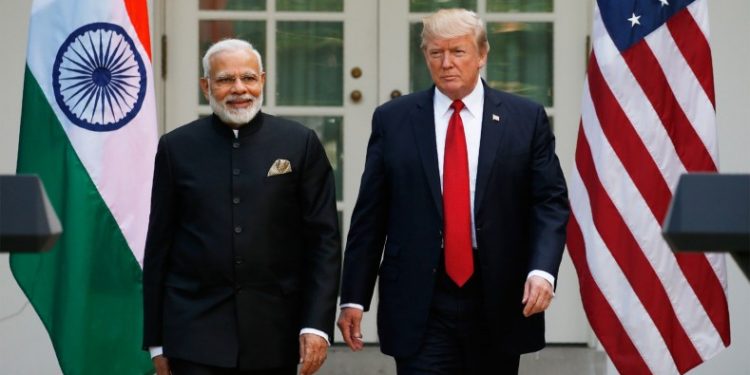As the impact of the recent Narendra Modi-Donald Trump meeting in the White House on India’s economy is being assessed, it is significant that hours before Prime Minister Modi’s visit, President Trump announced that the US would levy “reciprocal tariffs” on its trading partners. Sitting in the Oval Office, Trump explained that the US would automatically raise its own import taxes to match existing levels in other countries. Whatever countries charge the US, the latter will charge them. “No more, no less,” he said. In his pugnacious way, which marks his new tariff war, he said that in almost all cases these countries are “charging us vastly more than we charge them,” but those days are “over,” he warned.
In fact, Modi’s US visit came amidst a delicate economic moment in India. Trump spoke of India’s high tariffs on American cars and other products, which are meant to protect Indian industry and create domestic jobs. India, like Mexico and Canada, will also enter negotiations to bridge its trade surplus, but this could involve concessions that could hurt Indian industry and purchases it can hardly afford. New Delhi tried to mollify the US by reducing tariffs on Harley Davidson motorbikes in the Budget. However, for Trump, that was too little, too late. The Indian government has gone out of its way to avoid tariffs in view of its fragile economic growth.
High tariffs on steel imports that the US has already announced are bound to affect Indian exports. However, the Indian economy is largely fueled by domestic consumption compared to other Asian economies. That is the deeper problem that is now starting to emerge. The government’s expanded food transfer programme has supported India’s bottom half and may have led to their participation in the economy. However, there is an urgent need for greater economic reform to encourage higher and more equitable growth. The government has said it expects a growth rate of about 6.7 per cent for the year ahead, indicating strong growth in the current global landscape. But the bigger concern, explain economists, is growing per capita income and better distribution of that income so that it reaches the people who need it most.
The rising inequality would best be addressed through a higher tax on the super-rich and using it to support small businesses, which have been affected by compliance costs for the Goods and Services Tax and that could be simplified and lowered. Though there will be continuity in key areas of strategic partnership, including Indo-Pacific engagement and the Quad, economic discussions, trade, energy, nuclear cooperation and defense are likely to dictate the India-US agenda. Neither the optics nor the words emanating from the White House suggest that India’s efforts have significantly persuaded Trump to go soft on imposing counter-tariffs and reciprocal taxes. In fact, the inhumane treatment meted out to undocumented Indian immigrants during their deportation aboard military flights only shows that the US under Trump would not make India an exception while safeguarding its economic interests. For one thing, Trump has an overwhelming majority of votes which probably makes him think he is invincible, for the time being.
Also Read: India has been victim of terror acts perpetrated by Pakistan through groups such as JeM: India tells UNSC
The Indian economy is facing such a crisis that though there has been inequality for past decades, what is being witnessed now has not been seen since 1947. The government has sought to spur growth through strong spending on infrastructure such as roads and bridges. But the stimulus provided during the pandemic meant the government needs to tighten its belt to meet its fiscal deficit target of 4.5 per cent by next year. This reduced spending could also take away from some of the boost provided by the income tax relief. Trump’s appearance on the global economic scene only makes matters worse.







































